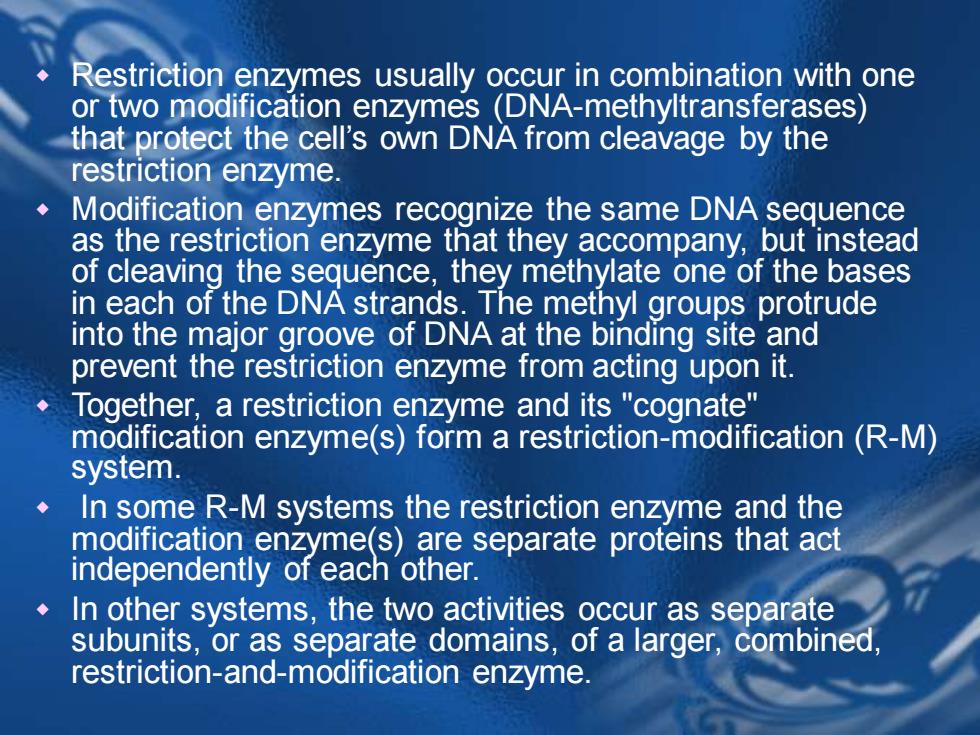正在加载图片...

Restriction enzymes usually occur in combination with one or two modification enzymes (DNA-methyltransferases) that protect the cell’s own DNA from cleavage by the restriction enzyme. Modification enzymes recognize the same DNA sequence as the restriction enzyme that they accompany, but instead of cleaving the sequence, they methylate one of the bases in each of the DNA strands. The methyl groups protrude into the major groove of DNA at the binding site and prevent the restriction enzyme from acting upon it. Together, a restriction enzyme and its "cognate" modification enzyme(s) form a restriction-modification (R-M) system. In some R-M systems the restriction enzyme and the modification enzyme(s) are separate proteins that act independently of each other. In other systems, the two activities occur as separate subunits, or as separate domains, of a larger, combined, restriction-and-modification enzyme. Restriction enzymes usually occur in combination with one or two modification enzymes (DNA-methyltransferases) that protect the cell’s own DNA from cleavage by the restriction enzyme. Modification enzymes recognize the same DNA sequence as the restriction enzyme that they accompany, but instead of cleaving the sequence, they methylate one of the bases in each of the DNA strands. The methyl groups protrude into the major groove of DNA at the binding site and prevent the restriction enzyme from acting upon it. Together, a restriction enzyme and its "cognate" modification enzyme(s) form a restriction-modification (R-M) system. In some R-M systems the restriction enzyme and the modification enzyme(s) are separate proteins that act independently of each other. In other systems, the two activities occur as separate subunits, or as separate domains, of a larger, combined, restriction-and-modification enzyme